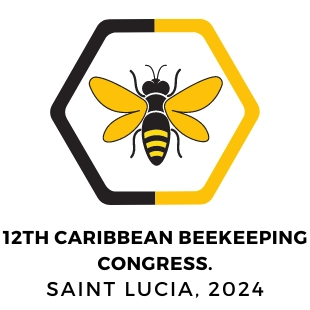 Mbawemi women lighting their beeswax candles and comparing with a shop-bought candle. (Mzuzu, Malawi)
Mbawemi women lighting their beeswax candles and comparing with a shop-bought candle. (Mzuzu, Malawi) In Praise of Beeswax
Beeswax is one of nature’s amazing materials. Human societies have long valued beeswax, and today it remains an expensive product with many uses. Yet some beekeepers remain unaware of the value of beeswax, and even throw it away. What waste that represents, for bees consume around eight kilograms of honey to produce just one kilogram of beeswax.
Beeswax is made by young worker honey bees. It is secreted as a liquid from four pairs of wax glands on the ventral surface of the abdominal tergites (plates on the underside of a bee’s body). The liquid wax spreads over the surface of these plates, and, on contact with air, the wax hardens and forms a tiny wax scale on each tergite, which can be seen as a small flake of wax on the underside of the bee. A worker honey bee produces eight of these scales of wax every 12 hours.
About one million of these wax scales are needed to make one kilogram of wax. Bees use the stiff hairs on their hind legs to remove the scales of wax and pass them on to the middle legs, and then to the mandibles (jaws) where wax is chewed, and salivary secretions become mixed with the wax. When it is the right consistency, the new wax is used for comb construction or used to seal honey cells. Bees are stimulated to produce wax when there is a surplus of honey to be stored and a lack of honey comb in which to store it.
Beeswax is a valuable product that can provide a beekeeper with worthwhile income in addition to honey. One kilogram of beeswax is worth more than one kilogram of honey, and unlike honey, beeswax is not a food product and is simpler to deal with, not requiring careful packaging: this greatly simplifies its storage and transport. Beeswax as an income generating resource is too often neglected. Some African countries where fixed comb beekeeping is still the norm, for example, Ethiopia and Angola, have significant beeswax exports, while in others the trade is neglected and beeswax is discarded.
Worldwide, many honey hunters and beekeepers do not know that beeswax can be sold or used for locally made, high-value products, yet as shown here, rendering of beeswax and the creation of candles and other secondary products can be a useful way for people to add value and create high quality articles for sale. No candle is more beautiful nor has a more delicious aroma – than a lustrous candle made from pure, golden beeswax.

